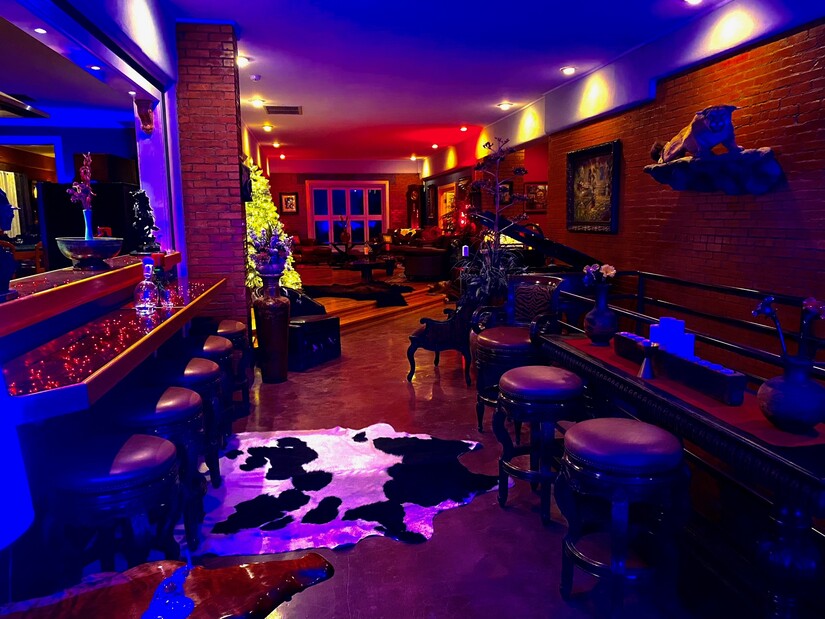Image
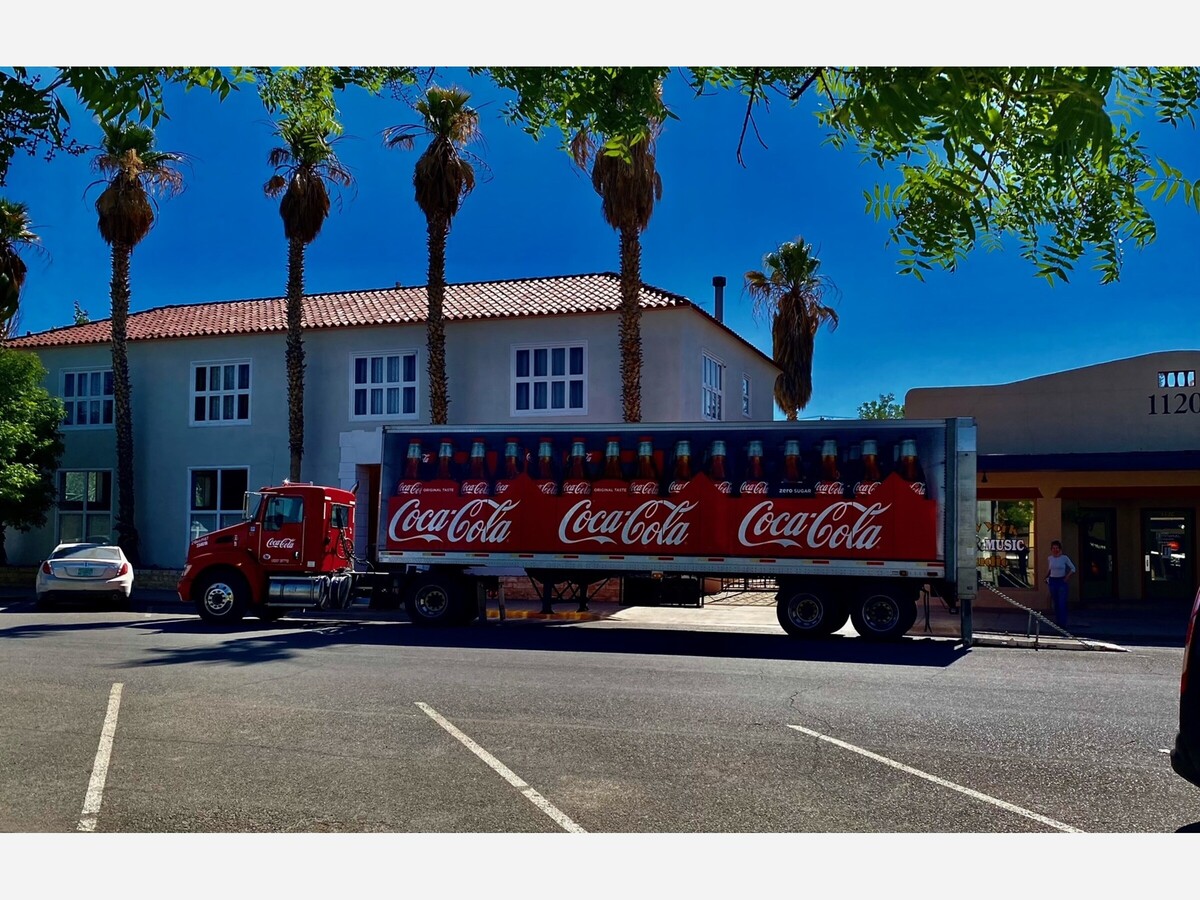
From a warehouse to a Coke Plant then transformation into an opulent private residence, historical preservation and arts matter to a communities character.
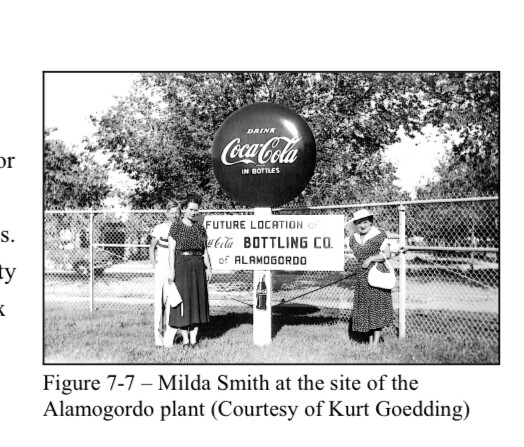
Those driving down New York Avenue in Alamogordo, New Mexico passing the corner of 12th and New York are typically intrigued by the large palm trees and the beautiful courtyard, wondering of the history of the building? Most have no idea the history of the building some locals recall it as the old Coke Plant, newcomers as the “building with all the palm trees.”
The history of the building dates to the 1950s
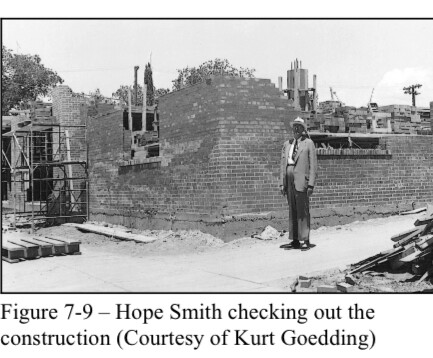
About 1950, a gentleman named Hope Smith commissioned his brother-in-law, C.A. Goetting, to build the small warehouse near the corner of New York and Twelfth Street in Alamogordo, New Mexico. The new warehouse was to be used to serve Otero and Lincoln Counties. Smith, himself, often rode on delivery trucks, including the ones that made the long haul to m Alamogordo before the construction of the new warehouse. On one delivery trip in New Mexico, a driver (not Smith) was in a White truck (which Smith disliked and distrusted) and was involved in an accident where the truck rolled over. The accident resulted in two major changes. The first came soon: Smith decided to open a bottling plant in Alamogordo. The second came a bit later when he phased out White trucks in favor of vehicles from General Motors.
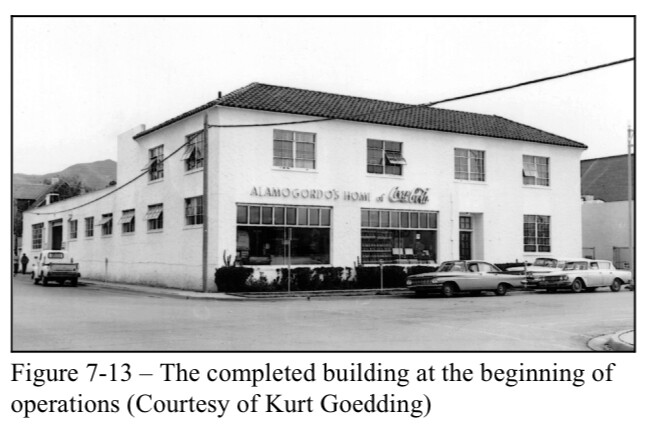
In early 1955, the construction of the plant for the Coca-Cola Bottling Co. of Alamogordo was completed.
The building was constructed with fire resistant concrete and steel masonry with roofs of red tile still seen today. Interior walls were painted a “smooth, glossy white,” and the outside walls were stuccoed with concrete and painted white. The original contract called for a total price of $98,482.00, and the firm charged an additional $497.91 for “extras and credits.” Goedding agreed to the price, and Smith paid the contractors – the plant was completed at a cost of $98,979.91
The proposed new plant was “to be a duplicate of the Coca-Cola plant in El Paso “and was planned to be in operation by “late spring of 1955.”
The plant began bottling on October 1, 1955, after an inspection by “one of the chemists from Atlanta Coca-Cola laboratories”who gave the plant “a grade as near perfect as could be ascertained.” The building occupied 16,000 square feet of floor space and had the “very latest bottling equipment” including a “Meyer bottle washer, 40-spout Liquid filler, Crown Cork & Seal mixer, Miller inspection machine, Crown water and syrup cooler and carbonator and an Evans heater.” (Alamogordo News 9/4/1955).
The new company advertised in the Alamogordo News the day after the opening (10/2/1955) and crowed: “We are proud of our water-treating plant, as every ounce of water used in bottledCoca-Cola must be pure and uniform. This modern plant removes the alkalinity and any odors that might exist, or any foreign matter…” The ad also noted that “the Coca-Cola bottles are not touched by human hands from the time they enter the bottle washer and are submerged in 160-degree caustic solution, washed, brushed, rinsed, inspected, filled, capped, and again inspected…”
The management invited the public and students to come in and tour the new plant. By mid-1975, the new company shut down the bottling operation and began shipping product in from its Carlsbad bottling plant.
The property since has transformed into a private residence of opulence and artistic expression. The former bottling plant now has South Beach feel as a beautifully transformed home and artisan showcase.
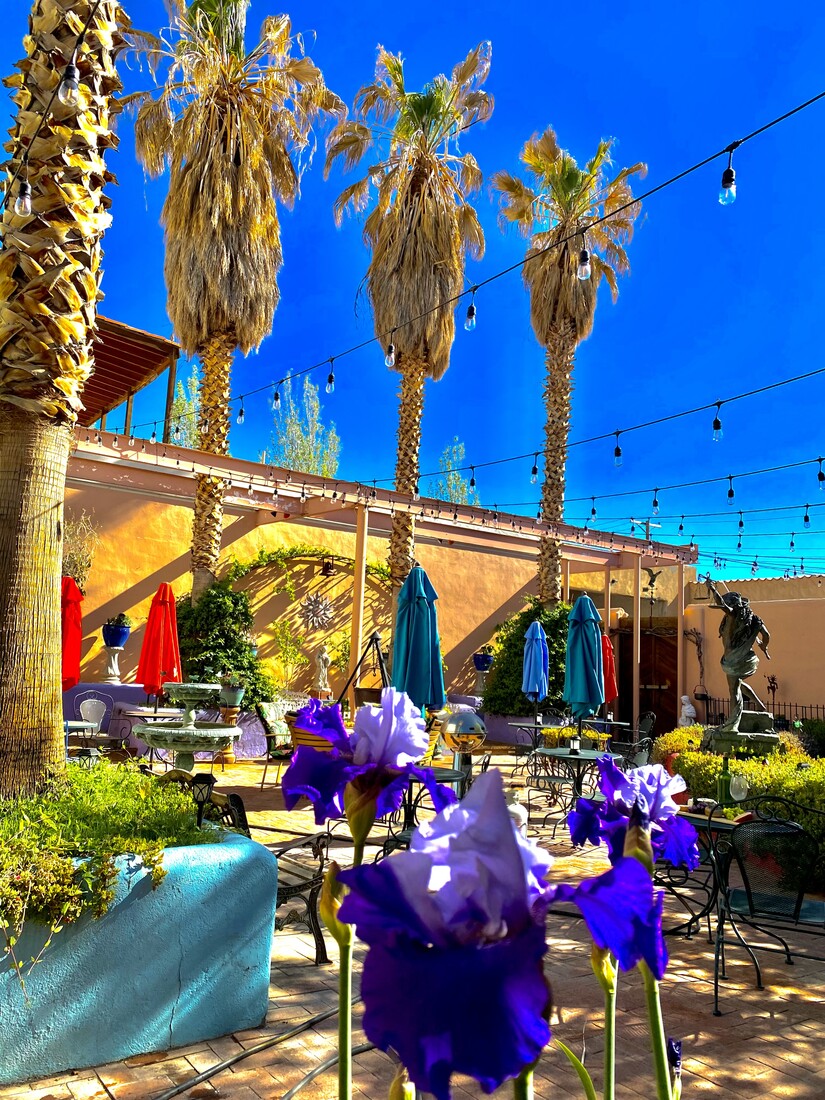
From the lush gardens (that are rented for private parties and events), to the expansive private residence, with its multiple baby grand pianos, museum quality collection of original artwork, sculptures, and furs it compares to any home in Santa Fe or beyond.
The home is owned by Emmanuel and Lydia Renteria and adjacent gallery, New York Art & Music Studio and Gardens. The home is a must-see favorite stop on the New York Avenue Ghost and History Tour conducted monthly.
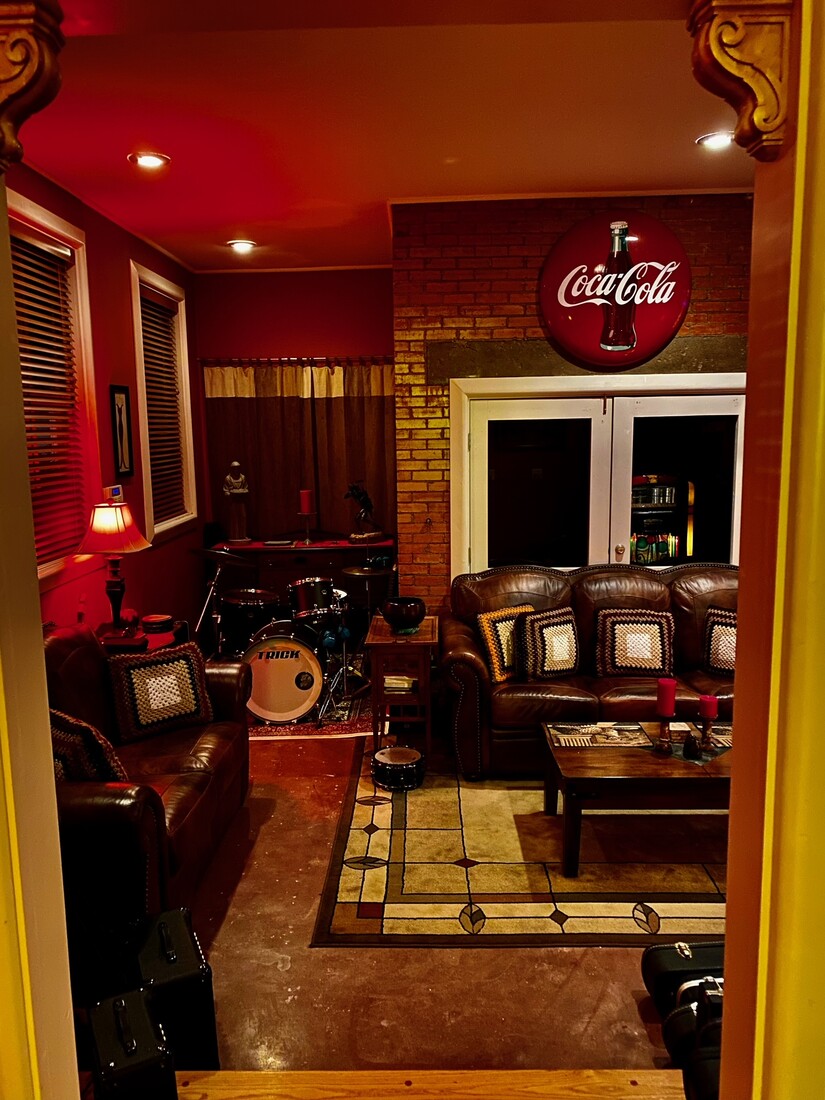
The Renteria’s showcase their home as an example of the possibilities for Alamogordo, and the possibilities of transformation; of an old Coke bottling plant, old warehouses and properties into modern functional spaces full of history, art and cultural significance.
